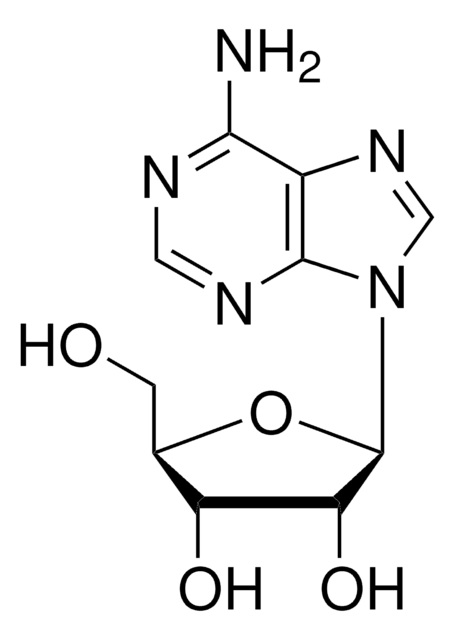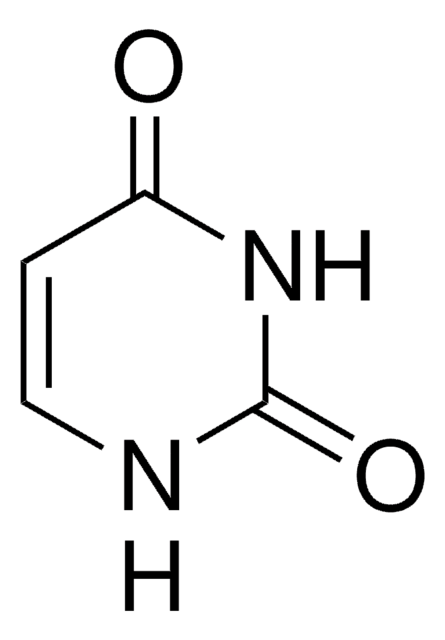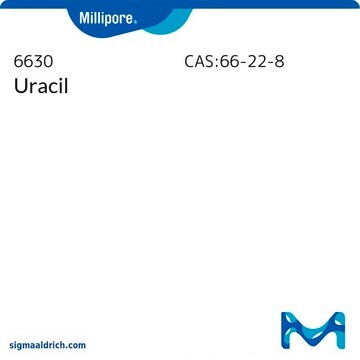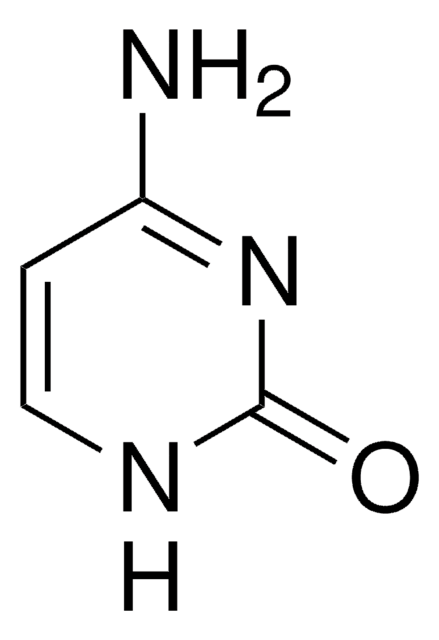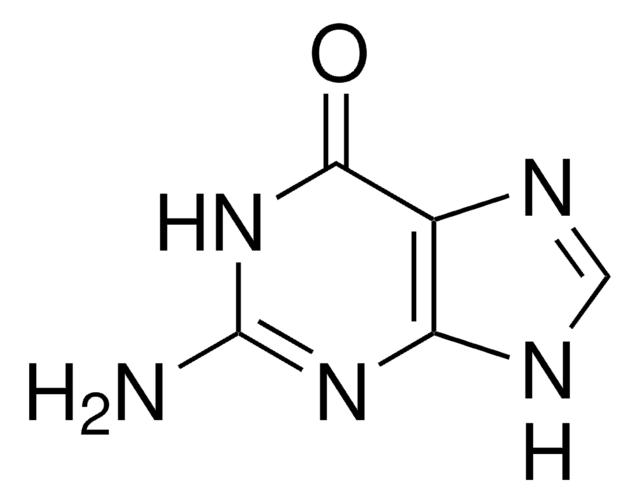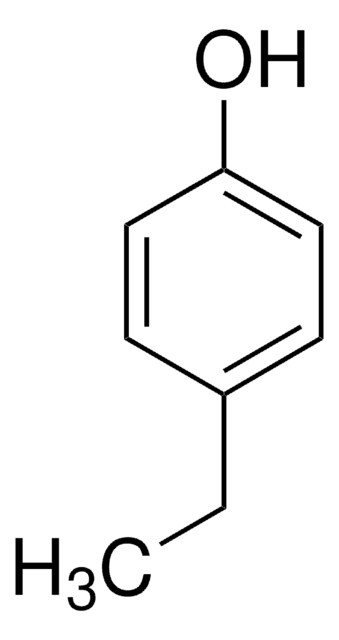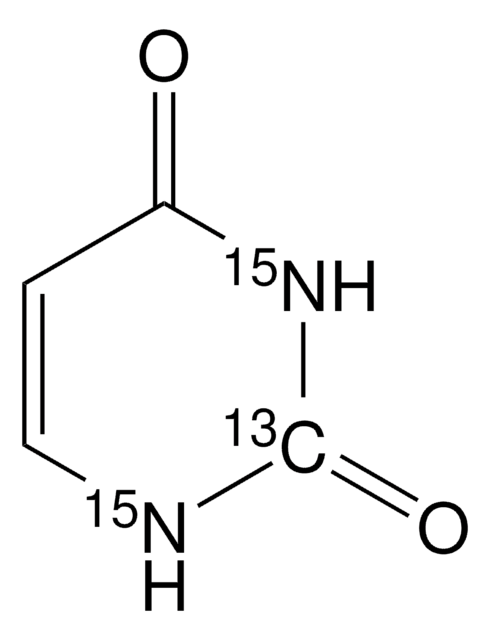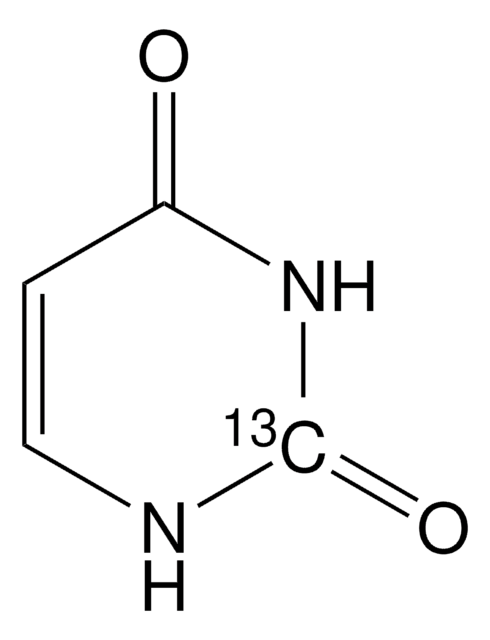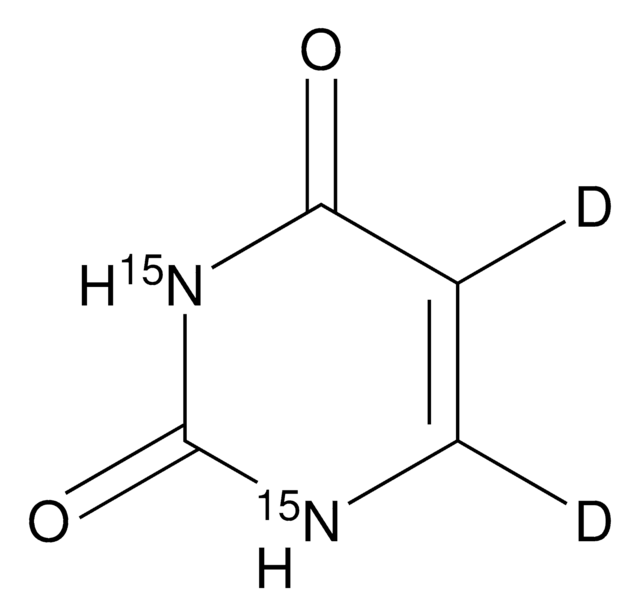U0750
Uracil
≥99.0%
Sinónimos:
2,4(1H,3H)-Pyrimidinedione, 2,4-Dihydroxypyrimidine, 2,4-Pyrimidinediol
About This Item
Productos recomendados
origen biológico
synthetic (organic)
Nivel de calidad
Ensayo
≥99.0%
Formulario
powder
mp
>300 °C (lit.)
cadena SMILES
O=C1NC=CC(=O)N1
InChI
1S/C4H4N2O2/c7-3-1-2-5-4(8)6-3/h1-2H,(H2,5,6,7,8)
Clave InChI
ISAKRJDGNUQOIC-UHFFFAOYSA-N
¿Está buscando productos similares? Visita Guía de comparación de productos
Descripción general
Aplicación
- a nucleotide standard to determine DNA methylation by high-performance liquid chromatography
- a component of synthetic define medium for culturing Saccharomyces cerevisiae and its strain
- a component of the amino acid supplement to culture Bacillus sp
Acciones bioquímicas o fisiológicas
Código de clase de almacenamiento
11 - Combustible Solids
Clase de riesgo para el agua (WGK)
WGK 3
Punto de inflamabilidad (°F)
Not applicable
Punto de inflamabilidad (°C)
Not applicable
Equipo de protección personal
Eyeshields, Gloves, type N95 (US)
Elija entre una de las versiones más recientes:
¿Ya tiene este producto?
Encuentre la documentación para los productos que ha comprado recientemente en la Biblioteca de documentos.
Los clientes también vieron
Artículos
A shortened review of fundamentals of Porous Graphitic Carbon (PGC) materials. What they are and how do they work as a stationary phase material in HPLC?.
Nuestro equipo de científicos tiene experiencia en todas las áreas de investigación: Ciencias de la vida, Ciencia de los materiales, Síntesis química, Cromatografía, Analítica y muchas otras.
Póngase en contacto con el Servicio técnico
